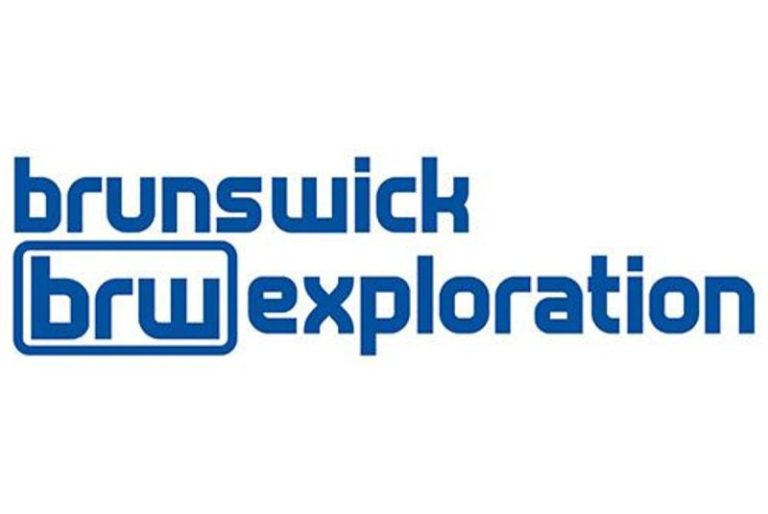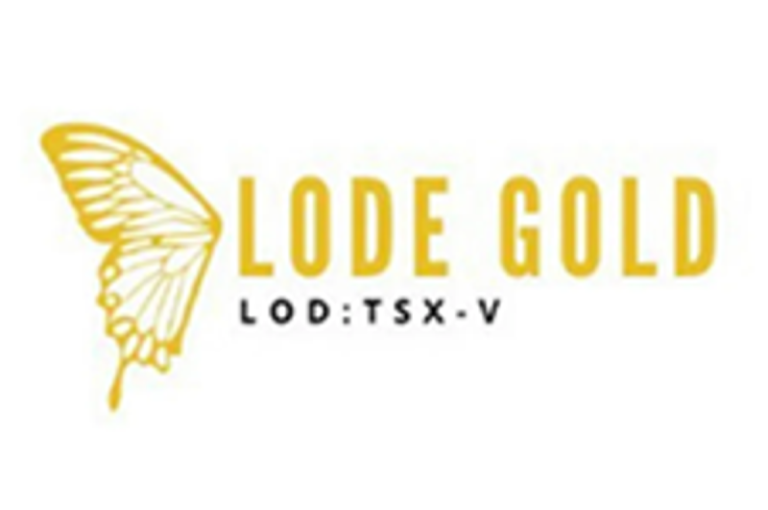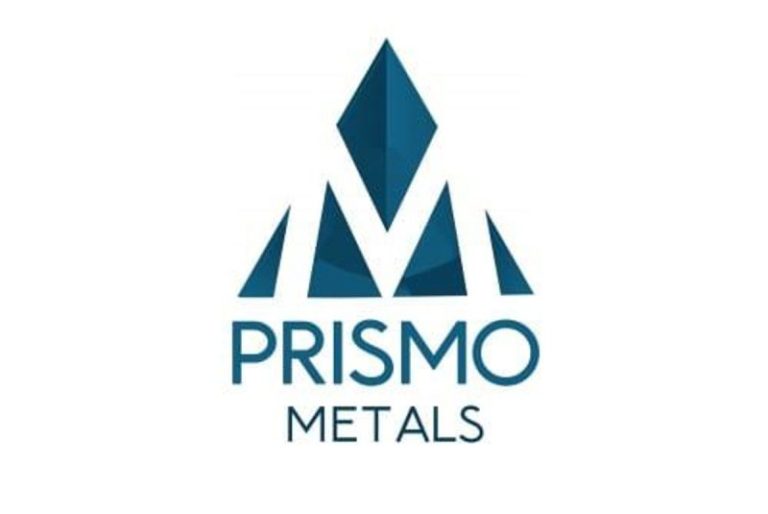Investor Insight
With multiple significant lithium discoveries under its belt and a proven exploration strategy that yields results, Brunswick Exploration makes a compelling investment proposition in the ever-expanding lithium space.
Overview
Brunswick Exploration (TSXV:BRW,OTCQB:BRWXF,1XQ:FF) is one of North America’s few publicly traded companies aggressively pursuing grassroots lithium exploration across Canada and Greenland. The company is leveraging cutting-edge exploration technologies and systematic geological fieldwork to uncover new spodumene-bearing pegmatite discoveries in underexplored districts.
Brunswick has staked and is actively exploring large-scale pegmatite fields in Quebec and both western and eastern Greenland. Its multi-regional strategy is designed to fast-track discoveries of high-grade lithium deposits to meet rising global demand driven by the energy transition.
Brunswick’s exploration process begins with comprehensive data compilation and geological analysis to pinpoint promising target areas. Its experienced field teams then deploy traditional prospecting techniques—including bedrock mapping, sampling, and geophysical surveys—to validate targets on the ground. This hands-on approach has led to multiple new lithium discoveries and remains central to the company’s value creation strategy.
The company has launched an aggressive, regional-scale prospecting and mapping campaign across its extensive Greenland portfolio which will run for six weeks, supported by four field crews and two helicopters. The initial phase will see one team conducting detailed mapping and sampling around the Ivisaartoq spodumene discovery and surrounding areas. A second team will cover the expanded Nuuk and Paamiut licenses, including follow-up at the historical spodumene showing at Paamiut.
Starting in July 2025, fieldwork will pivot based on June results, with one crew continuing follow-up at Nuuk and Paamiut, and another moving to Disko Bay and Uummannaq. Findings will guide advanced exploration in August–September, including first-pass work at the newly acquired Hinksland project.
In Quebec, Brunswick Exploration has prioritized three key lithium projects in the Eeyou Istchee–James Bay region: Mirage, Anatacau, and PLEX with active drilling underway at Mirage following 2023 grassroots discoveries.
In 2024, the company made Greenland’s first lithium-bearing spodumene pegmatite discovery at the Ivisaartoq field under its Nuuk license—an area characterized by ancient Mesoarchean geology. Brunswick is now expanding its land position in both western and eastern Greenland to build on this breakthrough. In 2025, the company reported it had submitted license applications covering 20,785 hectares at Paamiut that include multiple metavolcanic amphibolite belts and nine mapped pegmatites 500–900 m in strike length, with approval pending. Brunswick had also applied for a 17,800-hectare Hinksland license in eastern Greenland containing over 50 mapped and interpreted pegmatite outcrops, including nine that are between 500 m and roughly 10,000 m in strike length, likewise awaiting government sign-off.
The exploration team is led by Executive Chairman Robert Wares, a renowned geologist and co-founder of Osisko Mining. Wares played a pivotal role in discovering the Canadian Malartic gold deposit, which became one of Canada’s largest gold producers. His leadership and exploration success provide strong technical guidance for Brunswick’s operations.
Company Highlights
- Brunswick Exploration (BRW) is a Montreal-based mineral exploration company listed on the TSXV under symbol BRW. The company is focused on grassroots exploration for lithium in Canada and Greenland, a critical metal necessary to global decarbonization and energy transition.
- This has generated one of the largest grassroots lithium portfolios globally.
- BRW’s board includes Robert Wares, one of the founders of Osisko Mining.
- BRW was recognized as one of the Top 50 TSX Venture listed companies in 2023.
- The company has staked hundreds of untested prospective pegmatites measuring a minimum strike length of 500 meters and within 50 kms of infrastructure.
- In 2023, three discoveries were made in the Eeyou Istchee-James Bay region of Quebec at the Mirage, Anatacau Main and Elrond projects.
- In 2024, BRW announced a newly discovered pegmatite outcrop from its Nuuk License, making it the first confirmed lithium discovery in Greenland.
- In 2025 BRW bolstered its first-mover position in Greenland by staking about 38,500 ha across two new licenses — 20,785 ha at Paamiut (SW Greenland) hosting nine 500-900 m pegmatite trends and 17,800 ha at Hinksland (E Greenland) with over 50 mapped pegmatites, including nine 500-10,000 m trends — making BRW one of the country’s largest mineral-license holders and giving it hundreds of untested targets for lithium exploration.
Key Projects
Mirage Project
The Mirage Project consists of 427 claims covering 21,230 hectares (including both staked and optioned claims), situated approximately 40 km south of the Trans-Taiga Highway in Quebec’s James Bay region. The project was initially staked following insights from a geologist who explored the area for gold over two decades ago and documented numerous angular pegmatitic glacial boulders containing large, well-defined spodumene crystals, including one boulder measuring 8 x 4 x 3 meters.
In fall 2023, Brunswick Exploration uncovered multiple high-grade spodumene outcrops along a 2.5-km trend, alongside a distinct 3 km boulder train with different mineralogical characteristics, suggesting the presence of multiple lithium-bearing sources within the project area.
The company intersected 37 m at 1.14 percent Li₂O in hole MR-24-87 at the MR-3 dyke; 36 m at 1.51 percent Li₂O in hole MR-24-102 within the Stacked Dyke area where the same hole also cut thirteen additional spodumene-bearing dykes and 28 m at 1.32 percent Li₂O in hole MR-24-101 at the MR-6 dyke, together extending the combined MR-3–MR-6–Stacked Dyke swarm to more than 1 km by 450 m. In the past drillings, Brunswick intercepted 1.55 percent and 1.64 percent Li₂O at 93.45 m and 69.3 m respectively at the MR-6 dyke The project continues to show excellent continuity and scale, with stacked dykes and new zones being delineated through ongoing drilling.
The winter 2025 drill program covering over 5,000 meters is designed to test new extensions to MR-3, MR-4, and MR-6 dykes, as well as additional targets within the broader Central Zone. Mirage is quickly emerging as a potential high-grade, large-tonnage lithium system.
Spodumene crystals at Mirage are massive and white to pale grey, both at the surface and in the core.
In 2025, BRW has continued to advance Mirage through additional drilling and metallurgical testing. The winter drill program intersected 36 meters at 1.51percent Li2O in the Stacked Dyke area and 28 meters at 1.32 percent Li2O at the MR-6 dyke, significantly extending these pegmatites along strike. This drilling confirms that the MR-3, MR-6 and Stacked Dyke systems form a major spodumene-bearing pegmatite swarm now traced over ~1,000 by 450 meters and open in multiple directions. Phase 1 metallurgical results indicate the potential for a dense media separation (DMS)-only flowsheet (no flotation required), capable of producing a clean spodumene concentrate grading ~5.5–5.7 percent Li2O with up to 76 percent recovery and low impurities.
PLEX Project
The company is also advancing the early-stage Poste Lemoyne Extension (PLEX) project, located along the La Grande shear zone approximately 75 km west of Patriot Battery Metals’ Corvette project. PLEX consists of 375 claims covering 19,175 hectares and remains a target for future prospecting campaigns.
Anatacau
Comprising the Anatacau Main and Anatacau West projects, these assets are under an option agreement with Osisko GP, a subsidiary of Osisko Development, under which Brunswick Exploration can earn a 90 percent interest in the projects. The Anatacau property is located just east of Rio Tinto (NYSE:RIO) recently acquired James Bay Lithium deposit (previously known as the Cyr deposit), previously owned by Arcadium (NYSE:ALTM) which has a total mineral resource of 110.2 million tons (Mt) at 1.30 percent lithium oxide and a total ore reserve of 37.3 Mt at 1.27 percent lithium oxide.
BRW completed a maiden drill program at the Anatacau West property totalling 3,712 meters. 17 of the 18 drilled holes intersected spodumene mineralization that generated up to 26.5 metres at 1.51 percent Li2O.
In the summer of 2023, Brunswick discovered a significant lithium pegmatite outcrop, measuring at least 100 meters long by 15 meters wide known as the Anais showing in Anatacau Main. The outcrop is within a larger cluster of pegmatite dykes all of which contain high-grade lithium mineralization.
This discovery is located 22 km east of Anatacau West and Rio’s James Bay project along a large-scale E-W deformation corridor which is host to the known lithium-bearing pegmatite dykes in the region.
Greenland
Brunswick Exploration is now one of Greenland’s largest mineral license holders and the only company actively exploring for lithium in the country, capitalizing on a clear first-mover advantage. With supportive regulations, highly prospective geology, and excellent outcrop exposure, 2025 is set to be a breakthrough year as the company launches a major lithium exploration campaign.
A six-week regional program begins in June, with four field crews and two helicopters deployed across Brunswick’s vast land package. One team will focus on the Ivisaartoq spodumene discovery, while another targets the Nuuk and Paamiut licenses. In July, follow-up work will continue at Nuuk and Paamiut, while a second team begins prospecting at the Disko Bay and Uummannaq properties.
Initial results will guide advanced exploration phases in August and September across high-priority targets.
2025 Paamiut license area
Brunswick Exploration has applied for new licenses covering 20,785 hectares, approximately 90 to 130 km northeast of Paamiut, a coastal town about 260 km south of Nuuk. The area lies within the Bjornesund tectonic block of the North Atlantic Craton, a geologically favorable region comprising tonalitic and granodioritic orthogneiss and Mesoarchean metavolcanic amphibolite belts.The newly staked ground includes multiple amphibolite belts up to 1.5 km wide and 15 km long, along with nine mapped and interpreted pegmatite targets ranging from 500 to 900 meters in strike length. License applications have been submitted and are currently pending final government approval
Nuuk Expansion
Brunswick Exploration’s Nuuk holdings include the Ivisaartoq spodumene discovery within the Ivisaartoq belt. The company has applied to stake the adjacent Ujarassuit amphibolite belt, which is up to 1 km wide and 40 km long. Additional claims have been secured within the Fiskefjord Complex, located 95 km north of Nuuk and 75 km southeast of Maniitsoq, covering amphibolite belts up to 4.5 km wide and 20 km long. The newly acquired and applied-for claims span 33,138 hectares and host hundreds of mapped and interpreted pegmatite outcrops, including six targets with strike lengths between 500 and 2,000 m.
Disko Bay
The Disko Bay licenses are located roughly 30 to 80 kms from the coastal city of Ilulissat, which is the third largest city in Greenland. The licenses are near multiple seaports and container terminals, including Ilulissat. The area is situated within the Aasiaat domain, part of the Paleoproterozoic Nagssugtoqidian Orogen, sandwiched to the south by the Archean North Atlantic Craton and to the north by the Archean Rae Craton. The Orogen extends west into the Trans-Hudson orogeny of Canada that continues to the lithium deposits near Snow Lake Manitoba and the Black Hills of South Dakota.
Multiple amphibolite and metasedimentary belts were acquired with some belts being over 20 km in strike length. The new claims have hundreds of mapped and interpreted pegmatite targets with a total license area of 49,639 hectares.
Uummannaq
The licenses are located roughly 70 km from the coastal city of Uummannaq, about 80 km north of Ilulissat. Uummannaq has a population of about 1,660, an airport and a ferry terminal as well as a nearby container terminal. The area is located within the Archean Rae Craton that is intermixed with the Paleoproterozoic Rinkian fold-thrust belt, both of which are in contact with the Paleoproterozoic Nagssugtoqidian Orogen to the south.
The new license contains multiple amphibolite and metasedimentary belts with dozens of mapped and interpreted pegmatites with a total license area of 9,770 hectares.
Management Team
Robert Wares – Executive Chairman
Robert Wares is a professional geologist with more than 35 years of experience in mineral exploration and development. He was responsible for discovering the Canadian Malartic bulk tonnage gold mine, which was subsequently developed by Osisko Mining into one of Canada’s largest gold producers. Wares was a co-winner of the Prospectors and Developers Association of Canada’s ‘Prospector of the Year Award’ for 2007. He was also named one of the ‘Mining
Men of the Year’ for 2009 by the Northern Miner. He has a Bachelor of Science and an honorary doctorate in earth sciences from McGill University.
Killian Charles – President and CEO
From 2017 to 2021, Killian Charles worked as VP of corporate development for Osisko Metals. Charles was previously the manager of corporate development at Integra Gold Corp, which was an advanced-stage gold development company until it was acquired by Eldorado Gold in July 2017. He worked as a mining analyst at Industrial Alliance Securities and Laurentian Bank Securities. Charles covered small and mid-cap exploration and production companies as a mining analyst. Charles holds a Bachelor of Science with a major in Earth and planetary sciences from McGill University.
Anthony Glavac – CFO
Anthony Glavac has more than 17 years of experience in financial reporting, including over 12 years in the mining industry. Since August 2017, Glavac has served as vice-president, and corporate controller for Falco Resources, and previously served as director, financial reporting and internal controls at Dynacor Gold Mines. Glavac spent 10 years at KPMG, working with both public and private companies, providing audit, taxation, strategic advisory and public offering services. Glavac is also involved with other public companies in the mining industry.
Simon Hébert – Vice-president, Development
Simon Hébert is a professional geologist with over 13 years of experience in mineral exploration, having begun his career with Virginia Mines and Osisko Mining. He has worked on numerous metallogenic projects across Baie-James, Nunavik, and the Northwest Territories. In 2019, he helped form NQ Mining Investment, becoming its general manager in 2023. A member of the Ordre des Géologues du Québec since 2012, Hébert also serves as vice president of the AEMQ and is chair of the Table Jamésienne de concertation minière. He holds a BSc in Geology from Université Laval.
François Goulet – Exploration Manager, Quebec
François Goulet holds a master’s degree in structural geology from UQÀM and has extensive exploration experience in James Bay and internationally. He was recently president and CEO of Harfang Exploration, a gold project generator in Quebec. Goulet has worked with companies including Virginia Mines, Unigold, Maya Gold & Silver, the Canadian Malartic Partnership, and Glencore Canada. He is a board member of the AEMQ and a registered geologist with the Ordre des géologues du Québec since 2011.
Charles Kodors – Exploration Manager, Atlantic Canada
Charles Kodors is the Manager, Atlantic Canada at Brunswick Exploration Inc. and has been with the company since January 2021. Having 15 years of experience in the mining and exploration industry, he most recently served as an exploration manager for Osisko Metals and a senior exploration geologist for Kirkland Lake Gold. Kodors received his B.Sc. from Brock University and is a registered professional geologist within the provinces of New Brunswick, Newfoundland, Nova Scotia, Ontario, Quebec, Manitoba and Saskatchewan.
Shayaan Belluzzo – Corporate Secretary
Ms. Shayaan Belluzzo is a seasoned Corporate Secretary with over 8 years of experience of board governance and compliance, corporate restructuring matters for various global entities and investment vehicles, focusing on corporate regulatory and corporate governance best practices, and providing strategic legal support. Recently, Belluzzo also held key roles as Corporate Secretary of Windfall Mining Group and Assistant Corporate Secretary of Osisko Mining, supporting both companies during a $2.16 billion acquisition. Ms. Belluzzo’s diverse industry experience stems from her work in global investment, asset management, and law firms, including McCarthy Tétrault LLP.










